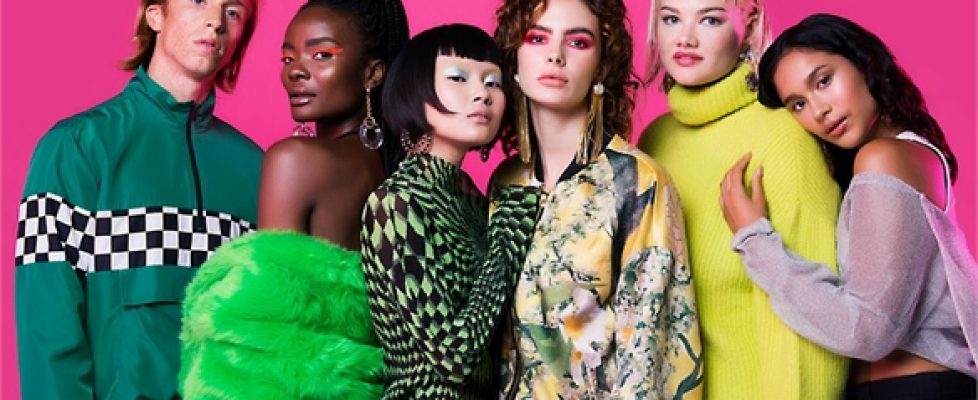People Blog
The second pillar, ‘People’, is a major focus in the fashion industry, demonstrating how the study of society can be used to predict the relationship between people and their wardrobe. This provides the industry with an insight into consumption patterns based on a desire for individuality and self-expression, which is concordant to social and environmental views. A greater demand for equality, diversity and sustainability has resulted in a dramatic shift in fashion from previous generations.
The current generation, born between 1996 and 2010, are referred to as ‘Gen Z’, who display greater value towards authenticity, demanding that their moral values are met by fashion brands. As this is the “first generation to grow up with the internet”, they are also known as the “true digital natives” (Francis & Hoefel, 2018), with social media becoming an essential segment in majority of people’s daily routines (McKinsey, 2023). Platforms such as TikTok, with 60% of users being Gen Z (Stahl & Literat, 2022), have provided individuals an area to showcase their creativity and communicate their thoughts through their digital persona. The fashion industry utilizes social media through strategies, such as emotional branding, storytelling, and “addressing relevant social issues” developing meaningful relationships with customers (Kim & Sullivan, 2019).
Due to Gen Z’s desire of being perceived with certain political ideals, clothing is used as a mask in order to “strengthen the self-image”, yet if a brand is negatively viewed as unauthentic it may conclude in “brand avoidance” (Kapferer, 2008). However, social media has brought greater exposure to unrealistic beauty standards resulting in the deterioration of mental health as a result of decreased self-worth and increased levels of anxiety (Stahl & Literat, 2022). For example, Groesz et al conducted a meta-analysis into “the effects of thin ideal media” on body image and found that, after being shown “thin media images”, women shared greater dissatisfaction to their bodies (Mills et al., 2017)
‘Third love’, a lingerie business, has been one brand that responded to the need of diversity and inclusivity in the fashion industry. The company provides 78 different sized bras with a wide range of shades, making it inclusive for all women with any skin and body type. They set up the “To Each, Her Own” campaign in September 2018, showing women from different diverse background, body sizes and ages, allowing consumers to identify better with the company. The campaign further encouraged women to post photos of themselves on social media, using “#ToEachHerOwn” and used real women rather than models in advertisements, bringing awareness to the brand’s inclusivity to all women (Kavilanz, 2019).
Reference list
Coe, E., Doy, A., Enomoto, K., & Healy, C. (2023, April 28). Gen Z mental health: The impact of tech and social media | McKinsey. Www.mckinsey.com. https://www.mckinsey.com/mhi/our-insights/gen-z-mental-health-the-impact-of-tech-and-social-media
Francis, T., & Hoefel, F. (2018, November 12). “True Gen”: Generation Z and Its Implications for Companies. McKinsey & Company. https://www.mckinsey.com/industries/consumer-packaged-goods/our-insights/true-gen-generation-z-and-its-implications-for-companies
Kavilanz, P. (2019, January 16). Bra sizing is wildly confusing. Her company seeks to change that | CNN Business. CNN. https://edition.cnn.com/2019/01/16/success/thirdlove-fresh-money/index.html
Kim, Y.-K., & Sullivan, P. (2019). Emotional Branding Speaks to Consumers’ heart: the Case of Fashion Brands. Fashion and Textiles, 6(1), 1–16. Springer. https://doi.org/10.1186/s40691-018-0164-y
McKinsey. (2023, March 20). What is Gen Z? | McKinsey. Www.mckinsey.com. https://www.mckinsey.com/featured-insights/mckinsey-explainers/what-is-gen-z
Mills, J. S., Shannon, A., & Hogue, J. (2017). Beauty, body image, and the media. Perception of beauty, 145-157.
Stahl, C. C., & Literat, I. (2022). #GenZ on TikTok: the collective online self-Portrait of the social media generation. Journal of Youth Studies, 26(7), 1–22. https://doi.org/10.1080/13676261.2022.2053671
Vajkai Kovács, É., & Zsóka, Á. (2020). Brand avoidance behaviour of Gen Z towards fast fashion brands. Vezetéstudomány / Budapest Management Review, 51(5), 39–50. https://doi.org/10.14267/veztud.2020.05.04
Image Reference
XSM. (2022, March 24). The Genderless World Of Gen Z. XSM. https://xsmultimedia.com/2022/03/24/the-genderless-world-of-gen-z/
